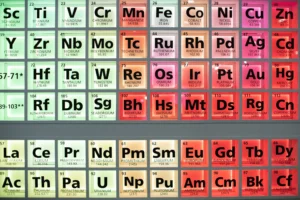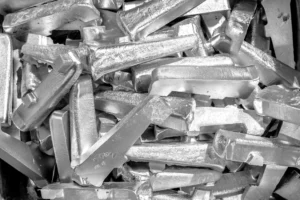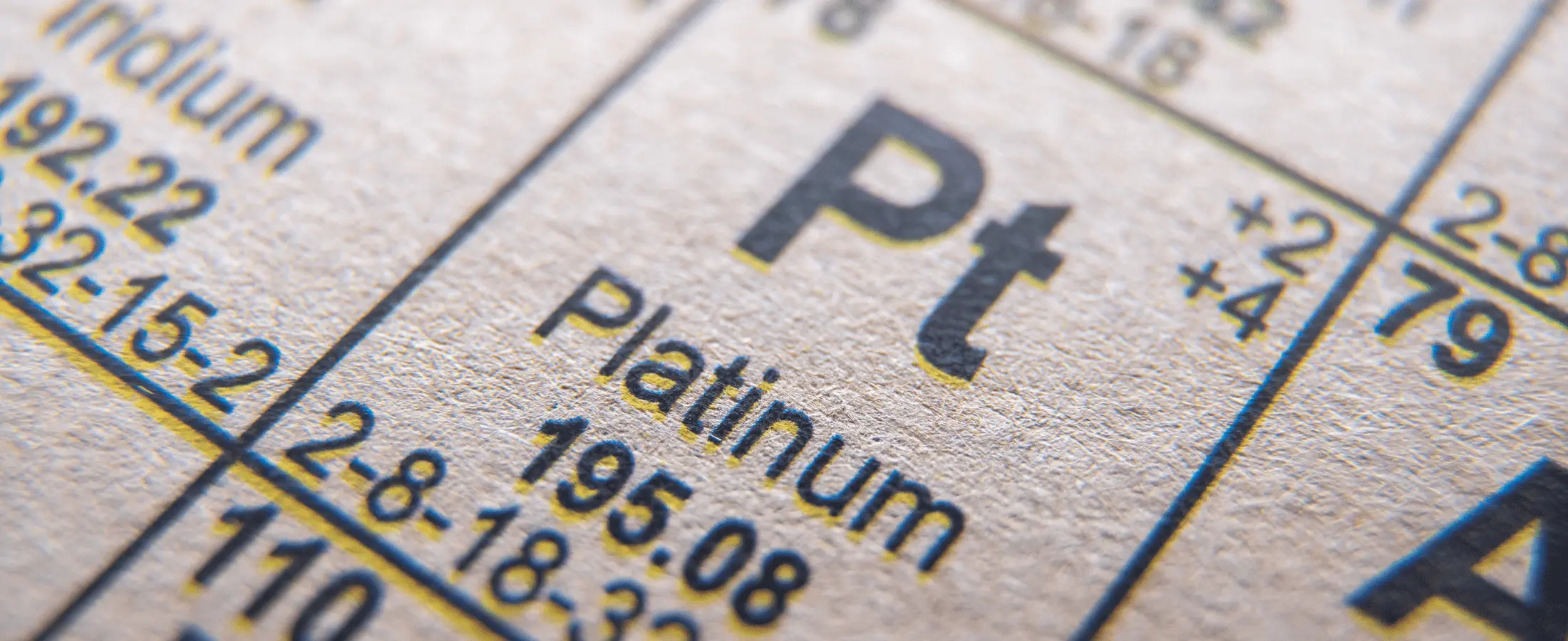Platinum is an intriguing metal with a rich history and a diverse range of uses. As a noble metal with a high melting point, platinum is a good catalyst, meaning that it can facilitate chemical reactions without being consumed in the process. Platinum is widely used in the jewelry, automotive, medical/lab and electronics industries. But it wasn’t always easy to use platinum the way we do today. Early on, platinum’s high melting point made it a challenging metal to work with.
Is Platinum Rarer Than Gold?
Yes, platinum is indeed rarer than gold – 30 times rarer, to be specific. It’s also significantly rarer than other metals like copper and iron.

Platinum is part of the platinum group metals (PGM) family, along with palladium, iridium, osmium, rhodium, and ruthenium. All of the platinum group metals are very rare, and platinum is actually the most common of the six PGM elements.
Platinum has an abundance of about a millionth of 1 percent in the Earth’s crust, while the other PGMs have abundances of about one ten millionth of a percent.
Platinum occurs in nature both in pure form and in alloys with other PGMs. It’s largely found in alluvial deposits of Russia’s Ural Mountains, South Africa, the Sudbury Basin of Canada, parts of Colombia and even a few areas in the Western United States.
Is Platinum More Valuable Than Gold?
Considering the fact that platinum is rarer, denser, more durable and harder to refine than gold, it’s interesting that platinum doesn’t currently have a higher market value than gold. In fact, the last time that platinum traded higher than gold was in September of 2008. From 1987 until then, platinum often outpriced gold. However, since 2011, gold’s market price has generally exceeded that of platinum. As of August 2024, gold’s spot price is $2,469 per ounce, more than double platinum’s at $922 per ounce.
Interestingly, the jewelry industry values platinum higher than gold, with platinum pieces generally being more expensive than their gold counterparts. This raises the question: why isn’t platinum more valuable than gold as a commodity?
To understand gold’s higher market value compared to platinum, we need to put the intrinsic chemical properties of each metal aside. Gold holds additional value beyond its metal value – a monetary premium – because it’s frequently bought and traded as an asset. Gold is treated more like a currency, while platinum is more so used for practical purposes.
Some investors like to buy and sell platinum to diversify their portfolios, but gold and silver are much more popular investment choices. Although less common than gold and silver bullion, platinum bullion is available in the form of coins and bars.
Platinum’s Discovery and Origins
Historical records suggest that ancient Egyptians may have been the first to use platinum, whether they did so knowingly or not. Archeological evidence indicates that platinum was present in the gold alloys used to make Egyptian jewelry over 3,000 years ago. But historians hypothesize that this may have been unintentional, as platinum was naturally present in some gold ore. So rather than deliberately using platinum, it’s more likely that the Egyptians simply used gold that contained impurities in the form of platinum.
This theory checks out, as platinum has a much higher melting point than gold, and the advances in refining technology that enabled people to melt platinum didn’t come until much later on. Natural alloys, however, like gold with traces of platinum, have different melting points than their constituent pure metals.
Platinum was also used by pre-Columbian South Americans to craft jewelry and various artifacts. They worked with platinum alloys to create items like nose rings, earrings, and other decorative pieces.

Early Studies of Platinum
The first recorded reference to platinum was in 1557 when an Italian scholar and physician named Julius Scaliger wrote about a metal found in Central America that wouldn’t melt and called it “platina,” meaning “little silver.”
In the 18th century, European scientists began formally studying platinum. Spanish scientist Antonio de Ulloa is credited with the discovery of platinum in 1735, however a British scientist named William Watson was the first to document it as a distinct element in 1750.
For many years, platinum was quite difficult to work with because it has such a high melting point – 3,216°F!
Refining Platinum
True refining of platinum, in which the metal is separated and purified, began to develop in the 18th century with advancements in chemical techniques. One of the first successful attempts at refining platinum was made by a Swedish chemist named Henrik Scheffer who discovered how to melt platinum in arsenic. But this technique wasn’t exactly efficient or safe. Luckily the method was later improved by French chemist Antoine Lavoisier. Lavoisier used a combination of borax and a high-temperature furnace.
By the late 18th century, chemists and metallurgists were continuing to develop and improve techniques for refining platinum, and huge strides were made in the early 19th century with the invention of high-temperature devices like the oxyhydrogen torch.
Commercial platinum refining began in earnest in the early 19th century. Garfield Refining then came along in 1892! (We are indeed a platinum refinery, but we also refine other precious metals like gold, silver and palladium!)
Today’s Uses of Platinum
Platinum is widely used today in jewelry, electronics, medical/lab equipment and more. And in the medical world, platinum isn’t just used for tools and equipment, but also in pacemakers, dental fillings and even cancer treatments!

A large chunk of platinum’s demand comes from the automotive industry where the metal is used as a catalyst. Platinum not only helps to convert emissions from gas-powered vehicles into less harmful waste, but it also serves as a catalyst for hydrogen fuel cell technology. Hydrogen fuel cells generate electricity by combining hydrogen and oxygen, leaving nothing but water as a byproduct. This system is used in electric vehicles of all kinds – cars, buses, trains and more!
Platinum is also used in the chemical industry to produce nitric acid, silicone and benzene.
How to Sell Platinum to a Refinery
While most people probably don’t think about selling precious metals on a regular basis, there’s always a chance you may end up with unwanted platinum in the form of inherited jewelry, coins, collectibles or even an extracted dental crown.
If you’re ever looking to sell platinum or other precious metals such as gold, silver, or palladium, Garfield Refining is your best bet. Our platinum refinery employs state-of-the-art technology to ensure the highest yields and maximum payouts for our clients.
We refine platinum, gold, silver and palladium for a wide range of industries, including private individuals. Garfield has been in business for over a century, and we’ve perfected not only our refining techniques, but our entire process from the moment you download a free shipping label to the moment you get paid. Our wonderful team of customer support specialists and account managers are here to ensure that your refining experience is seamless!
Garfield Refining has served over a million satisfied customers around the world and would love to assist you with your refining needs. We pride ourselves on top-notch service, high payments and quick turnarounds. Learn more about Garfield and get your shipment started today!

